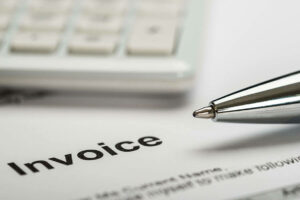What Are Liabilities in Accounting? With Examples

A company that can’t afford to pay may not be operating at the optimum level. In business, assets are the things that are considered of value for the business. These are the items owned by the business, which increases its overall worth. Liabilities, on the other hand, decrease the overall value since they are deducted from the business’s revenue.

Non-current liabilities are due in more than one year and most often include debt repayments and deferred payments. AT&T clearly defines its bank debt that is maturing in less than one year under current liabilities. For a company this size, this is often used as operating capital for day-to-day operations rather than funding larger items, which would be better suited using long-term debt.
How Do I Know If Something Is a Liability?
If you use a bookkeeper or an accountant, they will also keep an eye on this process. Along with the shareholders’ equity section, the liabilities section is one of the two main “funding” sources of companies. Just as you wouldn’t want to take on a mortgage that you couldn’t easily afford, it’s important to be strategic and selective about the debt you assume as a business owner.
- AP typically carries the largest balances, as they encompass the day-to-day operations.
- One—the liabilities—are listed on a company’s balance sheet, and the other is listed on the company’s income statement.
- Most often the portion of the long-term liability that will become due in the next year is listed as a current liability because it will have to be paid back in the next 12 months.
- If the company does not remit the sales tax at the end of the month, it would record a liability until the taxes are paid.
- In contrast, the table below lists examples of non-current liabilities on the balance sheet.
- Just as your debt ratios are important to lenders and investors looking at your company, your assets and liabilities will also be closely examined if you are intending to sell your company.
- This means the bills and other debts owed must be paid within this period.
One—the liabilities—are listed on a company’s balance sheet, and the other is listed on the company’s income statement. Expenses are the costs of a company’s operation, while liabilities are the obligations and debts a company owes. Expenses can be paid immediately with cash, or the payment could be delayed which would create a liability. https://www.bookstime.com/ Recorded on the right side of the balance sheet, liabilities include loans, accounts payable, mortgages, deferred revenues, bonds, warranties, and accrued expenses. Some common liabilities in business include payroll, utilities, rent payments, interest owed to lenders, and orders listed in accounts payable that is owed to customers.
Resources for Your Growing Business
If you are pre-paid for performing work or a service, the work owed may also be construed as a liability. Considering the name, it’s quite obvious that any liability that is not near-term falls under non-current liabilities, expected to be paid in 12 months or more. Referring again to the AT&T example, there are more items than your garden variety company that may list one or two items. Long-term debt, also known as bonds payable, is usually the largest liability and at the top of the list. Generally, liability refers to the state of being responsible for something, and this term can refer to any money or service owed to another party.
These liabilities are contingent as they depend on the potential changes that may take place within certain business transactions. These cannot yet be listed as liabilities since they cannot be measured or determined. For example, assets sold between businesses may consist of contingent liabilities that can occur due to the other findings that take place after the acquisition.
Accounting for Liabilities
They represent liabilities that must be settled as quickly as possible, as failing to do so may result in financial hardship. On the other hand, Non-current liabilities, even if they are not due immediately, can have an impact on a company’s long-term financial stability and creditworthiness. These examples show how different transactions liabilities in accounting can result in both current and non-current accounting liabilities, depending on the type and timing of the liabilities. The values listed on the balance sheet are the outstanding amounts of each account at a specific point in time — i.e. a “snapshot” of a company’s financial health, reported on a quarterly or annual basis.
In most cases, lenders and investors will use this ratio to compare your company to another company. A lower debt to capital ratio usually means that a company is a safer investment, whereas a higher ratio means it’s a riskier bet. Although average debt ratios vary widely by industry, if you have a debt ratio of 40% or lower, you’re probably in the clear. If you have a debt ratio of 60% or higher, investors and lenders might see that as a sign that your business has too much debt. No one likes debt, but it’s an unavoidable part of running a small business.
